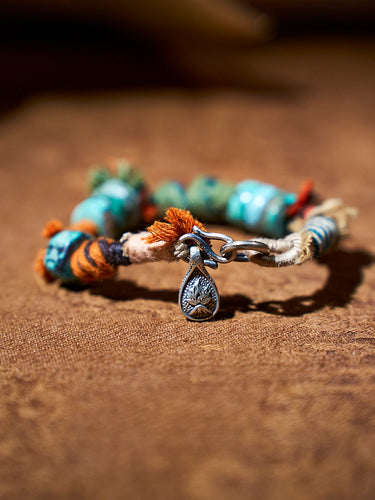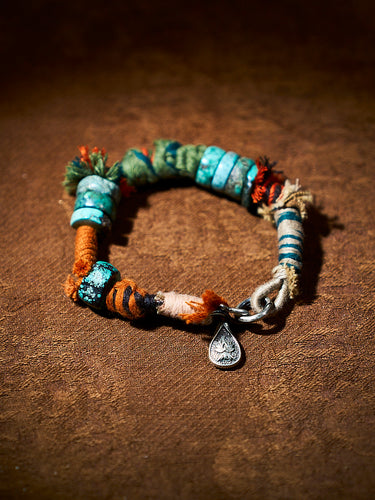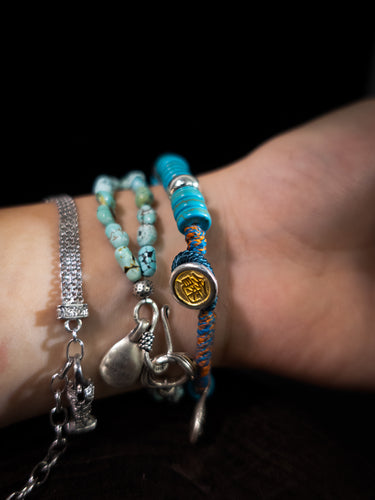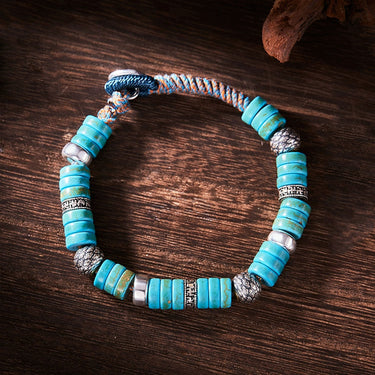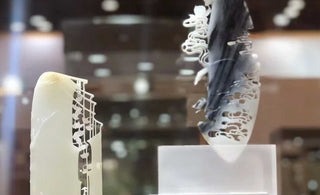
Beijing, the capital city of China, is not only a bustling metropolis but also a treasure trove of cultural heritage. Nestled within its ancient streets and modern skyline lie the "Eight Unmatched Wonders of Beijing," showcasing the unparalleled craftsmanship of traditional Chinese jade carving. These wonders, crafted from the finest jade, are not merely artifacts but embodiments of history, culture, and artistry. Let us delve into the rich tapestry of Beijing's cultural landscape and explore the stories behind each of these remarkable creations.
The Jade Ruyi and The Jade Seal
Among the "Eight Unmatched Wonders," the Jade Ruyi stands out as a symbol of authority and prosperity. Fashioned from a single piece of flawless jade, it embodies the elegance and power of ancient China. The Ruyi, meaning "as one wishes" in Chinese, is a traditional ceremonial scepter often associated with blessings and good fortune. Adorned with auspicious symbols and intricate carvings, the Jade Ruyi is a testament to the skill and craftsmanship of generations of artisans. Its smooth curves and delicate motifs evoke a sense of harmony and balance, reflecting the cultural values of time. Whether displayed in a museum or treasured in a private collection, the Jade Ruyi continues to captivate admirers with its timeless beauty and symbolism.
Steeped in history and tradition, the Jade Seal holds a special place in Chinese culture as a symbol of imperial authority. Used by emperors to confer legitimacy and power, it is a tangible embodiment of the mandate of heaven. Carved with intricate designs and inscriptions, the Jade Seal is a masterpiece of craftsmanship and precision. Each stroke of the chisel tells a story, from the glory of past dynasties to the aspirations of future generations. Despite the passage of time, the Jade Seal remains a potent symbol of China's rich cultural heritage and enduring legacy.
The Jade Belt, Brush Pot and Pagoda
Symbolizing honor and prestige, the Jade Belt was once worn by high-ranking officials during the Ming and Qing dynasties. Crafted with meticulous attention to detail, it is a testament to the sophistication of traditional Chinese craftsmanship. Adorned with auspicious motifs and symbols of longevity, the Jade Belt reflects the values of a bygone era. Its intricate carvings and vibrant colors speak to the skill and artistry of ancient artisans. Whether worn as a symbol of status or admired as a work of art, the Jade Belt continues to inspire awe and admiration among enthusiasts and collectors alike.
A staple of scholarly life, the Jade Brush Pot embodies the essence of Chinese culture and aesthetics. Used to store brushes and writing implements, it is both functional and decorative. Carved with scenes from nature, classical literature, and mythology, the Jade Brush Pot is a window into the cultural landscape of ancient China. Each intricate detail tells a story, from the beauty of the natural world to the wisdom of the sages. Whether displayed on a scholar's desk or showcased in a museum, the Jade Brush Pot remains a cherished symbol of learning and refinement.
Rising majestically against the skyline, the Jade Pagoda is a symbol of spiritual enlightenment and tranquility. Adorned with intricate carvings of Buddhist scriptures and motifs, it is a sacred monument revered by believers and admirers alike. Each facet of the pagoda tells a story, from the teachings of the Buddha to the aspirations of the faithful. Whether visited as a place of worship or admired as a work of art, the Jade Pagoda continues to inspire awe and reverence among all who encounter it.
The Jade Carving, Jade Teapot and The Jade Necklace
Renowned for its delicate beauty and exquisite detail, the Jade Carving is a testament to the skill and creativity of ancient craftsmen. From intricate figurines to elaborate landscapes, each piece is a masterpiece in its own right. Crafted from the finest jade and adorned with precious gems, the Jade Carving captures the imagination and stirs the soul. Whether displayed in a museum or treasured in a private collection, it serves as a reminder of the enduring beauty of Chinese artistry.A symbol of hospitality and refinement, the Jade Teapot is prized for its elegant design and exquisite craftsmanship. Used in traditional tea ceremonies, it embodies the timeless beauty of Chinese culture. Each curve and contour is meticulously crafted, reflecting the skill and dedication of the artisan. Whether used to serve tea or admired as a work of art, the Jade Teapot evokes a sense of warmth and tranquility.
Adorned with precious gems and intricate designs, the Jade Necklace stands as a timeless emblem of elegance and grace, captivating hearts with its ethereal beauty. Crafted with meticulous care and adorned with lustrous gemstones, each facet reflects a story of luxury and refinement. Throughout history, this exquisite piece has graced the necks of royalty and nobility, serving as a symbol of prestige and sophistication. Its allure knows no bounds, transcending cultures and generations, enchanting all who behold its mesmerizing splendor.
From ancient civilizations to modern-day extravagance, the Jade Necklace has remained a coveted treasure, revered for its unparalleled craftsmanship and enduring charm. Its significance goes beyond mere adornment; it embodies the rich heritage and cultural significance of jade jewelry, symbolizing prosperity, longevity, and harmony. As it glimmers under the light, each delicate detail whispers tales of opulence and opulence, leaving an indelible mark on those fortunate enough to wear it.
With every gleam and sparkle, the Jade Necklace continues to captivate hearts and minds, perpetuating its legacy as a symbol of timeless beauty and prestige. Whether gracing the neckline of a queen or adorning the ensemble of a modern-day fashionista, its presence exudes an air of sophistication and refinement that transcends the boundaries of time.
In conclusion, the "Eight Unmatched Wonders of Beijing" are not just exquisite works of art but also invaluable treasures that embody the rich cultural heritage of China. From the elegant Jade Ruyi to the intricate Jade Necklace, these wonders showcase the unparalleled craftsmanship and timeless beauty of traditional Chinese jade carving. As symbols of power, status, and beauty, they continue to captivate and inspire admirers around the world, making them true treasures of Beijing's cultural landscape.
In the vast realm of classical Oriental art, few treasures resonate with the grandeur of China's imperial history as profoundly as the Silk Scrolls of Emperors. These intricately crafted scrolls, adorned with the majestic portraits and masterful calligraphy of China's emperors, offer a captivating journey through the annals of time, allowing enthusiasts to witness the convergence of artistic brilliance and imperial grandeur.
A Glimpse into Imperial Mastery: Unveiling the Artistic Tapestry of Dynasties
As one delves into the intricacies of the calligraphy on these scrolls, it becomes evident that every pen stroke is a deliberate expression of cultural identity. The script reflects not only the linguistic prowess of the scribes but also the values and ideals upheld by the imperial rulers. It is a journey through time, where the art of writing becomes a conduit for preserving the legacy of dynasties and immortalizing the emperors in the annals of history.The Silk Scrolls of Emperors serve as living testaments to the artistic prowess and cultural refinement of China's rulers. These scrolls, painstakingly crafted over centuries, reflect the distinctive styles of various dynasties, providing a visual narrative that unfolds the evolving tastes and influences shaping imperial artistry. From the intricacies of brush strokes to the choice of pigments, each scroll encapsulates the essence of a particular era, offering a tangible connection to the artistic legacy of China's imperial past.
At the heart of these scrolls lie the commanding portraits of emperors, not mere representations of physical likeness but embodiments of the very spirit of their reigns. The choice of colors, the meticulous attention to details, and the ethereal aura surrounding each figure convey a sense of authority and divine mandate bestowed upon the imperial ruler. As one gazes upon these portraits, the imperial majesty comes to life, providing an intimate glimpse into the lives and personas of the rulers who once held the destiny of a nation in their hands.
Calligraphy as an Art Form: The Poetic Dance of Brush and Ink
In the grandeur of the royal court, where every detail reflects the majesty of the emperors, the Silk Scrolls of Emperors stand as exquisite masterpieces. These scrolls, adorned with regal portraits, unfold a narrative of imperial splendor. Yet, it is not only the visual spectacle that captivates the beholder; it is the profound artistry of calligraphy that elevates these scrolls to unparalleled heights of cultural significance.
The calligraphy gracing the Silk Scrolls of Emperors is a testament to the unparalleled skill and aesthetic finesse of ancient scribes. Each stroke is a dance of ink on silk, a manifestation of disciplined precision and artistic intuition. The characters, meticulously crafted, seem to come alive, telling tales of dynastic grandeur and the virtues of the imperial lineage. The intricate balance between form and meaning is striking, as the calligraphic expressions seamlessly harmonize with the noble personas captured in the accompanying portraits.
These scrolls not only serve as historical records but also as a celebration of linguistic artistry. The calligraphy, with its graceful curves and deliberate strokes, transcends mere writing; it becomes a visual symphony, resonating with the cultural ethos of a bygone era. The choice of characters, the spacing, and the rhythm of the text collectively create a cadence that echoes the refinement and sophistication of the imperial court.
Moreover, the Silk Scrolls of Emperors offer a unique fusion of visual and literary aesthetics, where the calligraphy becomes an integral part of the overall artistic composition. The written characters not only convey messages but also contribute to the overall visual harmony of the scrolls. The choice of ink, the flow of the brush, and the deliberate placement of characters showcase a profound understanding of both linguistic and visual arts.
Symbolism Woven in Silk: Exploring the Metaphors of Imperial Splendor
The careful selection of silk as the canvas for these imperial masterpieces is a deliberate choice laden with profound symbolism, weaving an additional layer into the narrative of regal splendor. Silk, known for its luxurious texture and exquisite sheen, transcends mere practicality to become a symbolic representation of the opulence and refinement associated with imperial rule. As a fabric historically reserved for the elite and nobility, its use in crafting the Silk Scrolls of Emperors underscores the elevated status of the subjects depicted.
The inherent qualities of silk, with its smooth surface and lustrous finish, serve as an ideal backdrop for the intricate calligraphy and regal portraits, enhancing the visual impact of the scrolls. The tactile experience of running one's fingers over the silk surface elevates the appreciation of the artwork, creating a sensory connection between the observer and the imperial narrative. Furthermore, silk's association with longevity and endurance adds a temporal dimension to the scrolls, suggesting a lasting legacy that extends beyond the immediacy of the depicted scenes.
In the symbolism of silk, threads of cultural significance are intricately woven. It symbolizes wealth, status, and the meticulous craftsmanship that characterized imperial patronage of the arts. The choice of silk as the medium not only reflects the material abundance of the imperial court but also speaks to the sophistication and aesthetic discernment inherent in the portrayal of imperial narratives.
Moreover, the symbolism of silk extends to the very process of its production. The labor-intensive and intricate art of sericulture, the cultivation of silk-producing silkworms, mirrors the meticulous attention to detail required in the creation of the Silk Scrolls of Emperors. The transformative journey from cocoon to luxurious fabric mirrors the transformative journey of the imperial narrative, from the mundane to the extraordinary.
Preservation of Heritage: A Pledge to Safeguarding Cultural Legacies
Oriental Aesthetics, standing as a distinguished patron of classical oriental art, takes immense pride in safeguarding and promoting the legacy encapsulated in the Silk Scrolls of Emperors. Our commitment to preserving these cultural treasures extends beyond admiration, as we actively engage in conservation efforts. Through meticulous restoration and archival practices, we ensure that the delicate beauty and historical significance of these scrolls remain intact, allowing future generations to continue marveling at the splendor of China's imperial past. Oriental Aesthetics, in its pivotal role as a facilitator between artists, collectors, and enthusiasts, seeks to foster a global appreciation for the Silk Scrolls of Emperors. By providing systematic and high-quality professional services, we bridge the gap between creators and appreciators, allowing the legacy of these imperial scrolls to transcend geographical boundaries. The mission is not just to preserve these treasures within the confines of a particular region but to share the beauty and historical richness of China's imperial art with a global audience.
In conclusion, the Silk Scrolls of Emperors stand as profound witnesses to China's imperial heritage, combining artistic brilliance with historical significance. As we delve into the intricate details of each scroll, we are not merely witnessing portraits and calligraphy; we are traversing the corridors of time, immersing ourselves in the regal splendor that defined China's dynastic epochs. Oriental Aesthetics is honored to play a pivotal role in preserving and promoting this rich cultural tapestry for generations to come, ensuring that the Silk Scrolls of Emperors continue to captivate and inspire audiences worldwide.








